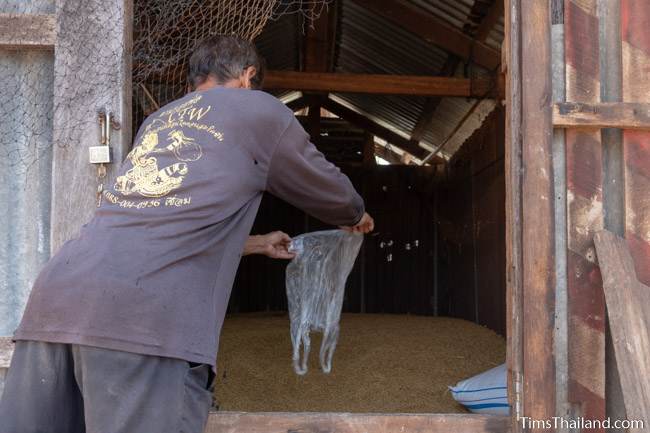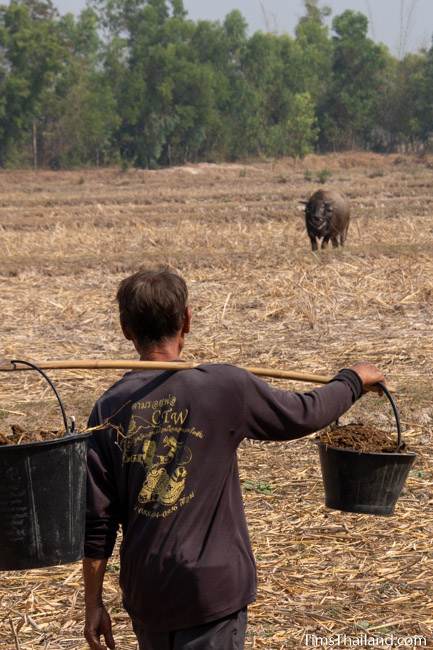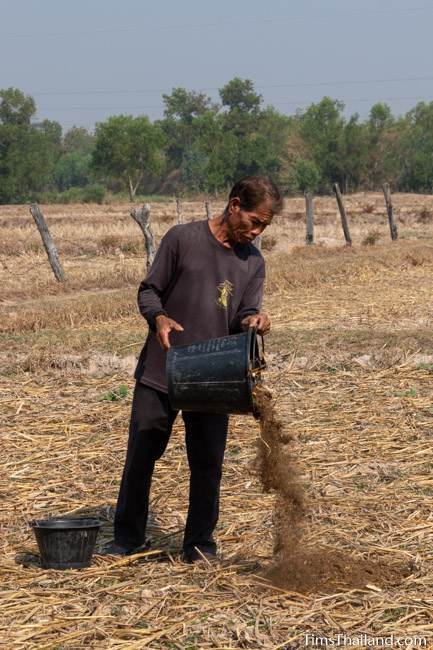These photos are from the Boon Berk Bahn (บุญเบิกบ้าน) ceremony in Ban Kham Aw village, Udon Thani province on February 7, 2019. Thanks to Mae Wong and her family for being great hosts.
This village doesn’t celebrate either Boon Khun Lan or Boon Khao Jee as individual ceremonies, but this event (aka Boon Duean Sahm, the “Third Month Merit-Making Tradition”) includes features from both. For more information see the overview of heet sip-song, the twelve Isan merit-making traditions. Note that some villages use the name Boon Berk Bahn for Boon Samha, but that is unrelated.
Preparation
Preparation of the offerings to the spirits and the monks began the day before. Each family cooks some food, ties bark from a banana plant into a kratong basket, and makes little clay figurines.
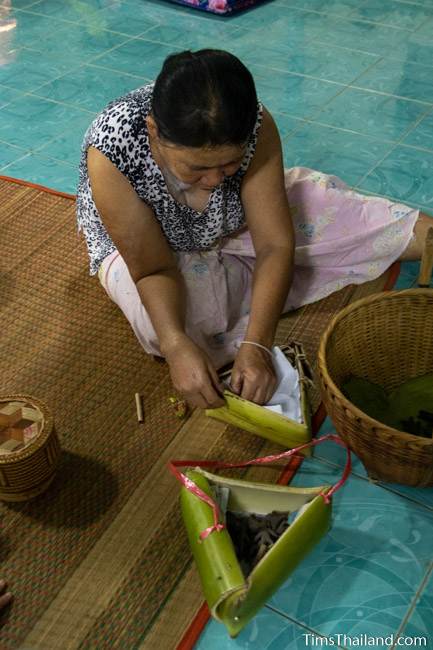
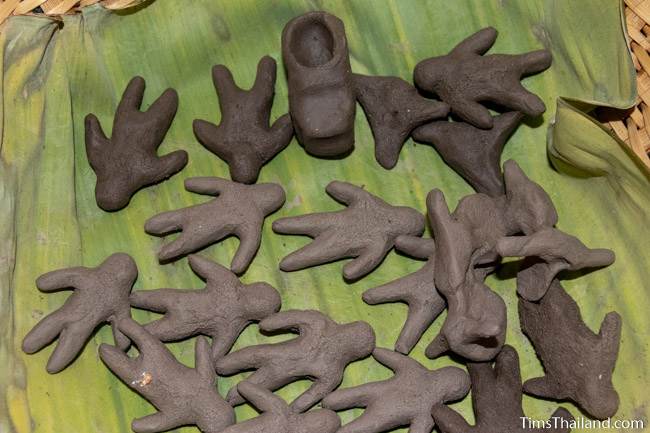
Up at 5am, the next morning started with making more food. Two in particular, both grilled over charcoal, are khao jee, sticky rice coated in beaten egg (it’s the namesake of Boon Khao Jee) and khao griap, a crispy flatbread made of sticky rice flour and pounded skunk vine (Paederia linearis) root.
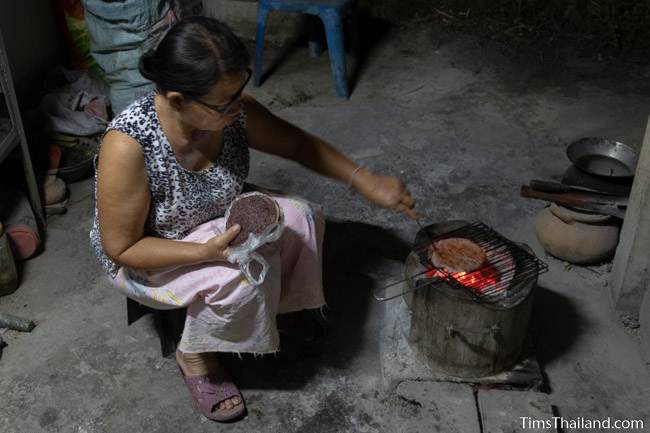
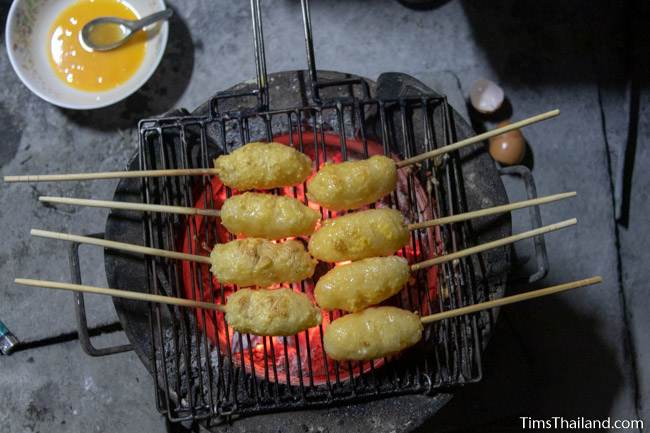
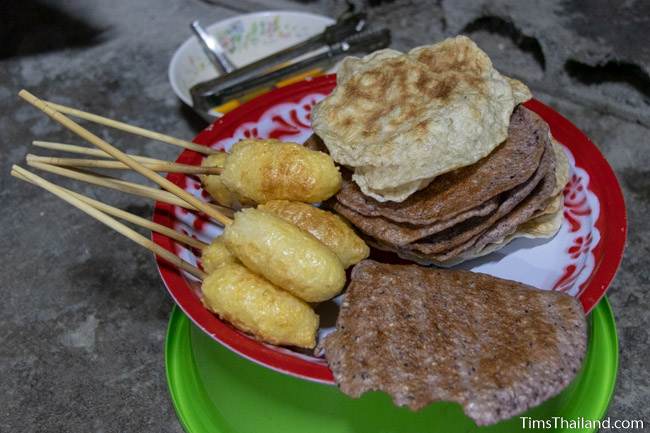
People also soaked flowers to make scented water and filled their kratong with food. There’s no standard menu for the kratong, each family chooses their own foods. Mae Wong gave khao jee and khao griap, white and black sticky rice, fermented fish sauce (bplaa raa), chili, banana, orange, grapes, grilled muu yang pork, fried fish, kanom chan and kanom tian (two Thai sweet snacks), fried dough, khao mao (a snack of unripe rice and coconut), a cigarette, and a betel set – and this differed little from the many other kratong.
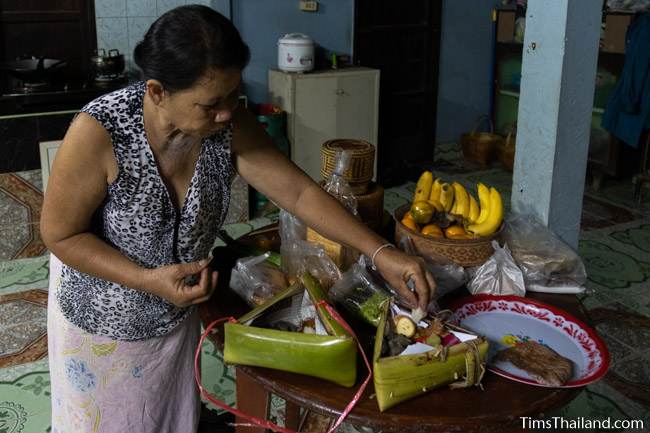
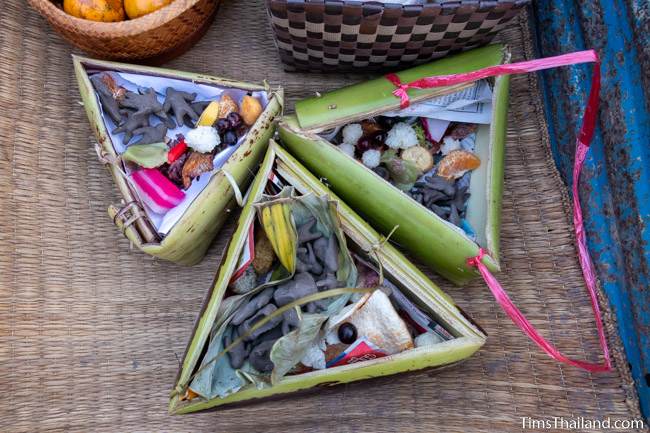
Each family took some unhusked rice from this season’s harvest out of their rice silo, which cannot be opened between the time the new rice goes in and today’s ceremony. Also showing how important this rice blessing is, every family’s silo had a white string physically linking it to the spot in the middle of the village where the blessing takes place. After the rice was gathered, everything was loaded up and taken (in this village many families used a push carts) to the village pillar shrine.
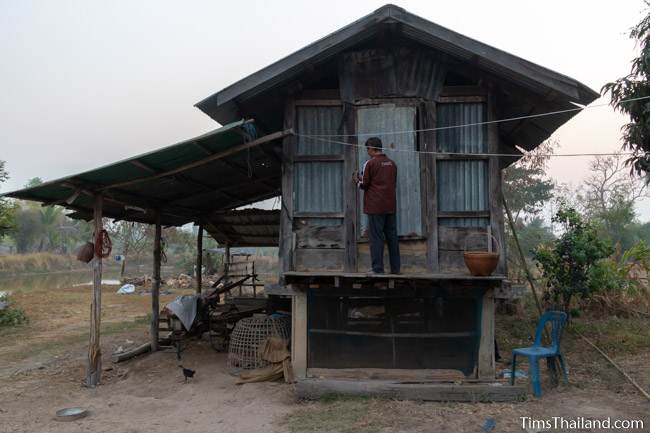
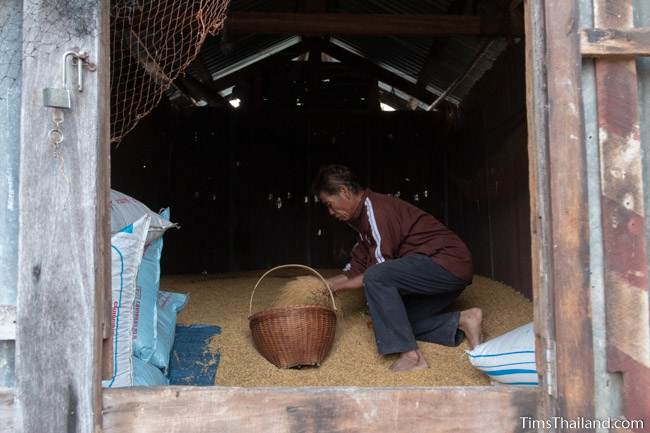
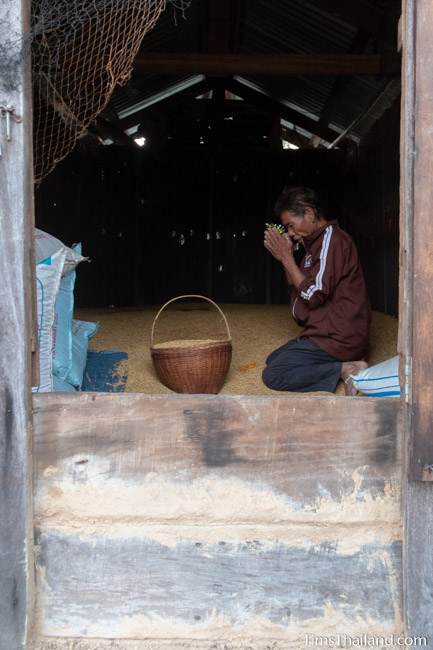
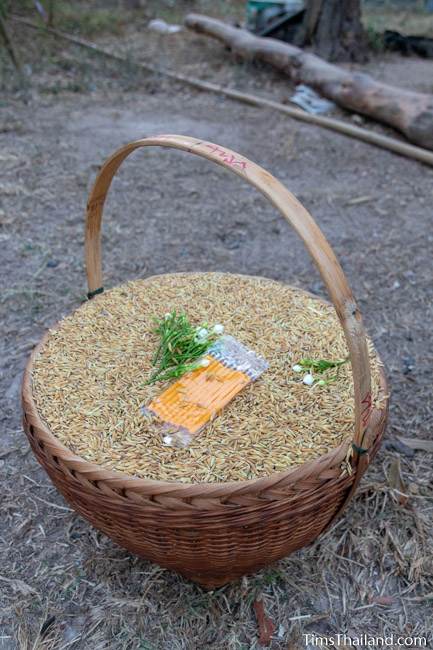
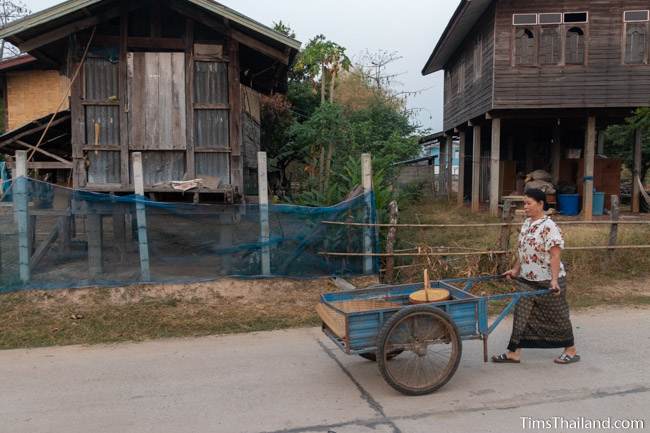
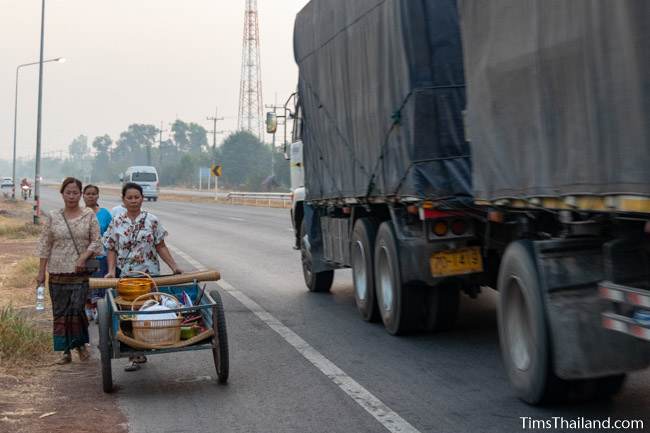
The Ceremonies
At the gathering place, people handed off their food to the people managing the monks’ morning meal and laid their kratong, clay figurines, scented water buckets, and rice – the four main features of the day’s festivities – on the ground. The kratong are for any spirits (ancestors or others) who come to join and the clay figurines, set alongside the pillar shrine, are sort of an annual census so the village’s guardian spirt knows how many people are in each household and what animals and vehicles they have. One human figure is given for each person but just one chicken, duck, buffalo, motorcycle, truck, etc. if the family has any of these things no matter how many. Ban Kham Aw is a pottery village and as far as anybody here knows this area is the only place where this activity is done with clay figurines.
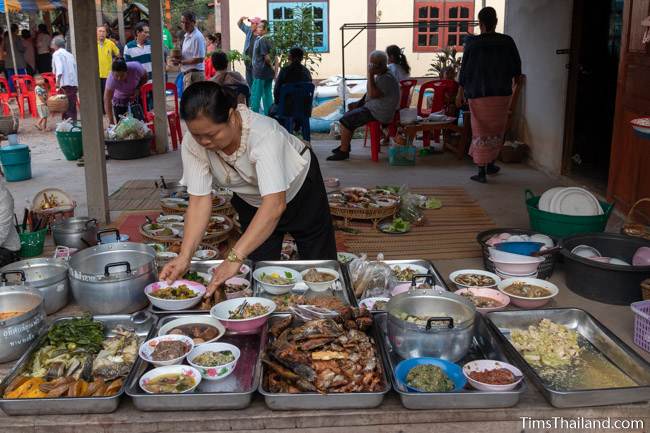
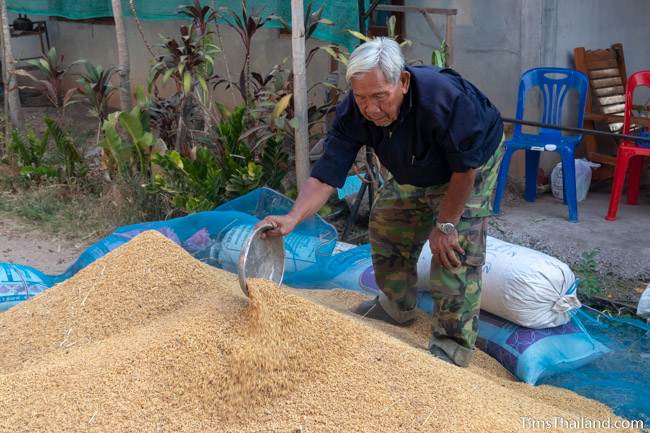
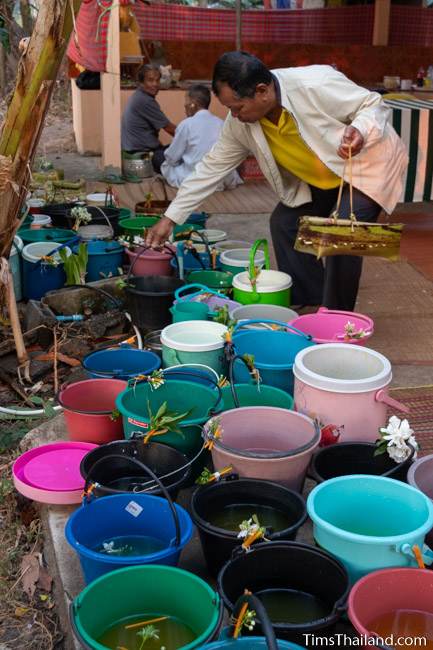
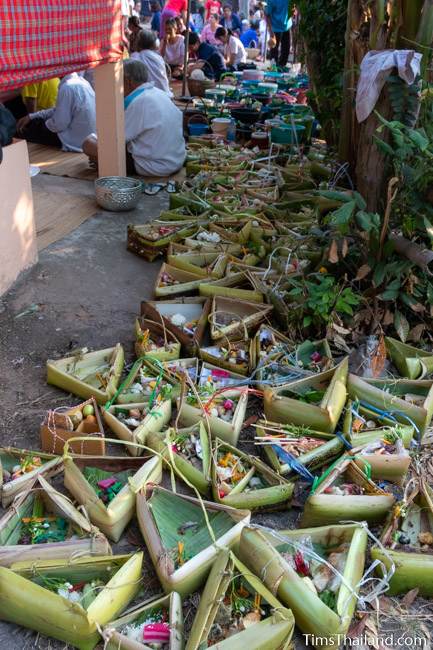
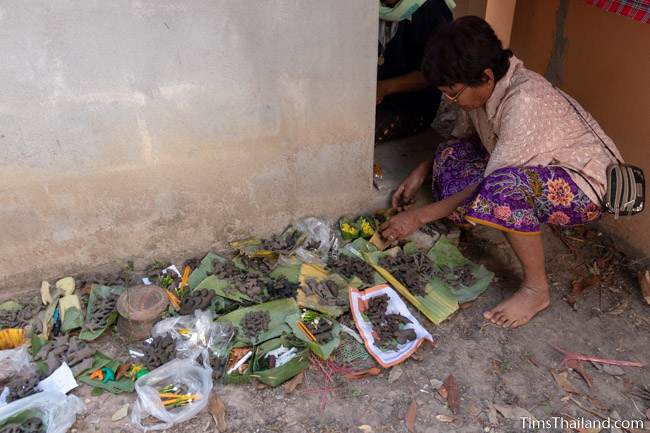
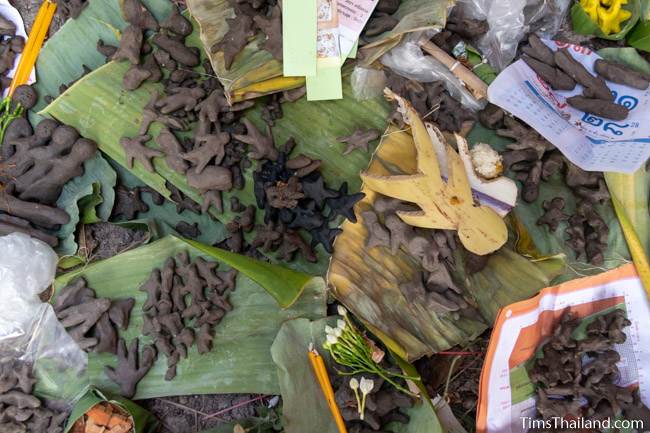
When the monks arrived and took their seats, everyone lined up to put food in their alms bowls (including the khao jee and khao griap) and then the formalities began with an offering to the Buddha; a little one brought to here just for the ceremony since this isn’t a temple. Then the monks led suat-mon chants and a gruat nam water blessing ceremony (for passing merit onto one’s ancestors) before being served huge trays of the food brought by the villagers.
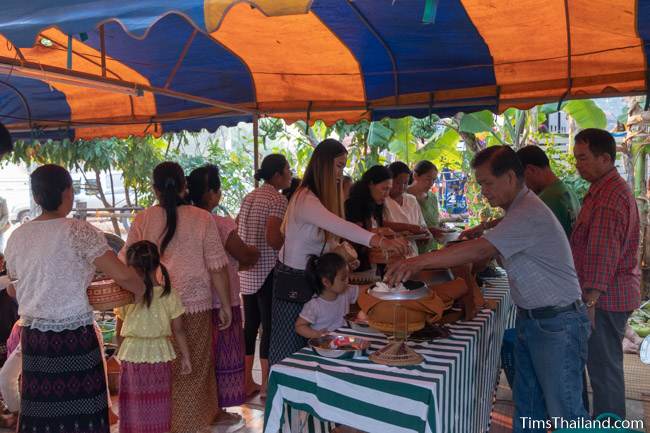
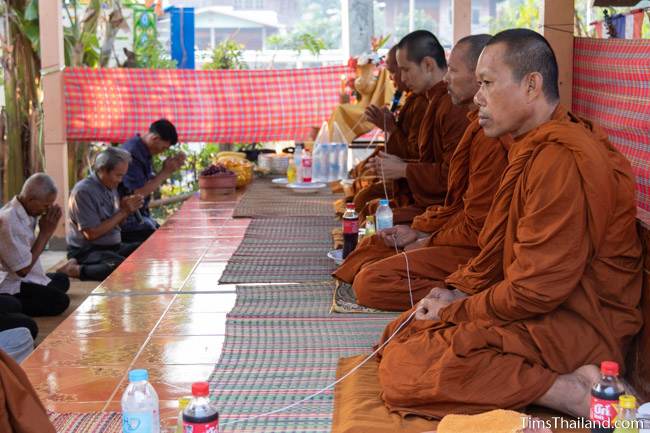
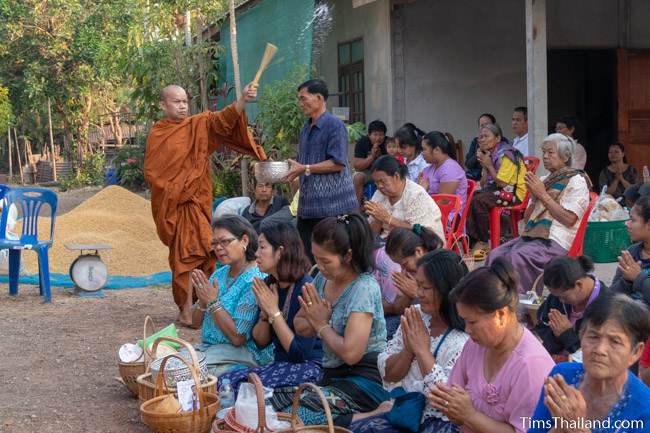
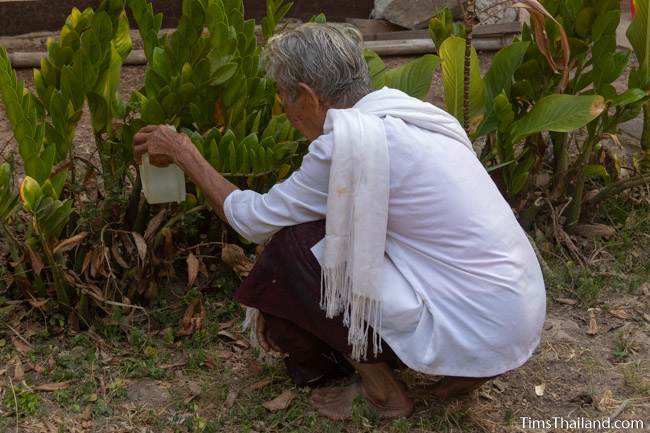
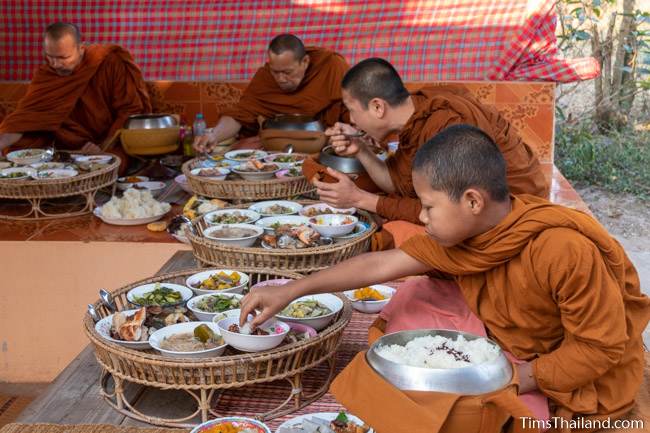
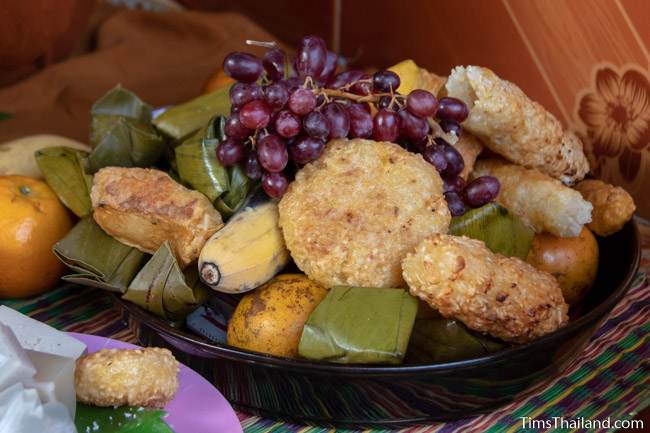
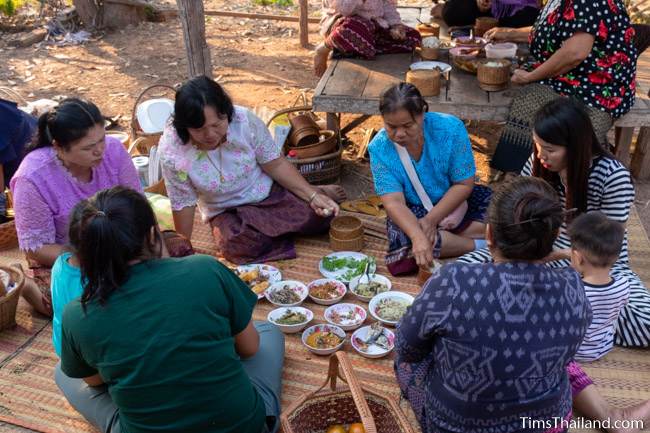
Breakfast over, the monks headed back to the temple and a maw kwan (shaman) took over the ceremony to lead the rice blessing. Called su kwan khao, it’s a show of gratitude and respect to the spirits who helped with the recent rice harvest and involves a bai sii placed atop the rice pile. After thanking the spirits, people tied sai sin sacred white threads around each other’s wrists for good luck and health, and each family took a handful or a small bag of rice from the pile. The remaining rice is given to the monks, although it’s semi-symbolic: in practice the village sells the rice and gives the money to the temple.
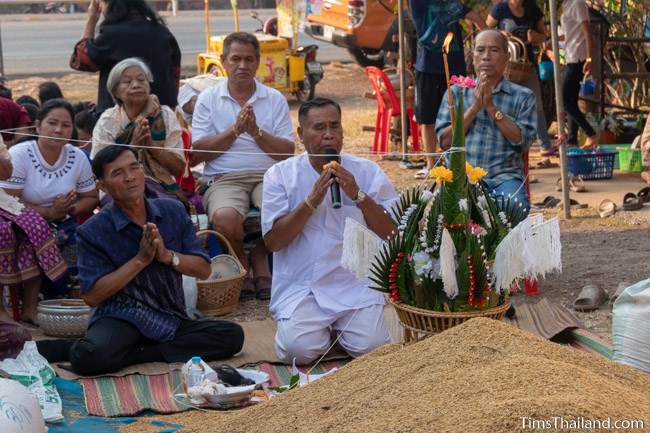
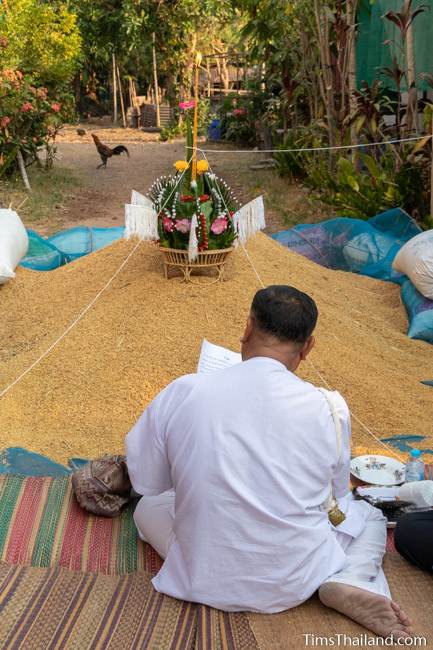
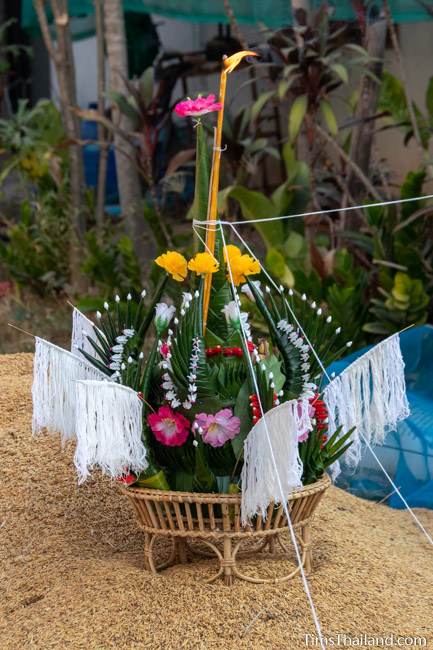
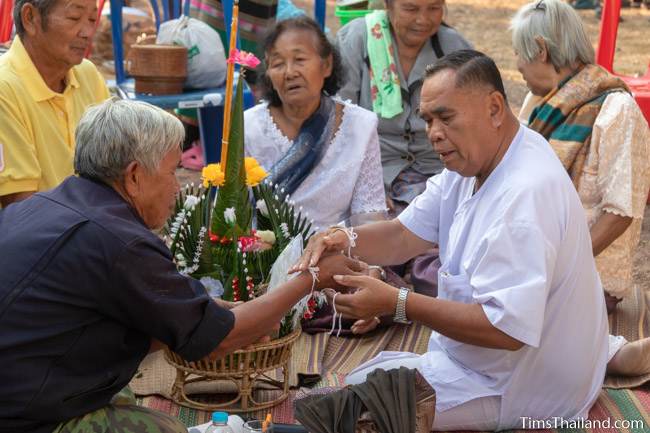
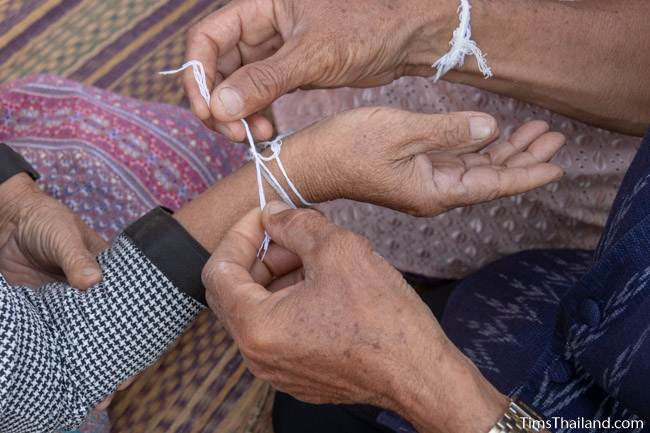
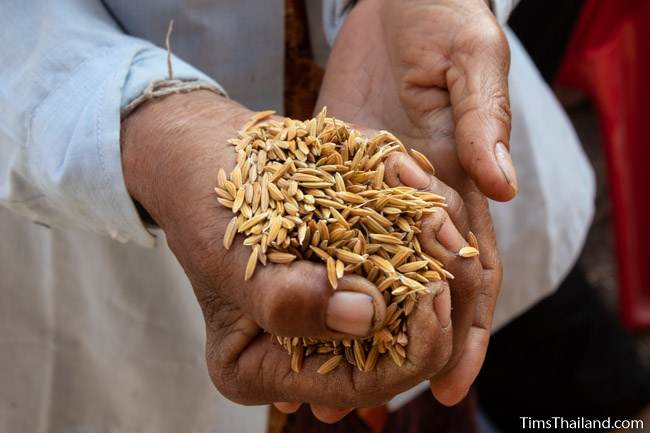
Back at Home
Back at home, people sprinkled their house with the now sacred scented water (and some also bathed with it), tossed the blessed rice they took off the pile into their silo, and dumped a few buckets of natural fertilizer from cows or buffalo (if a family doesn’t raise any they’ll get some from a neighbor) in their rice paddy.

